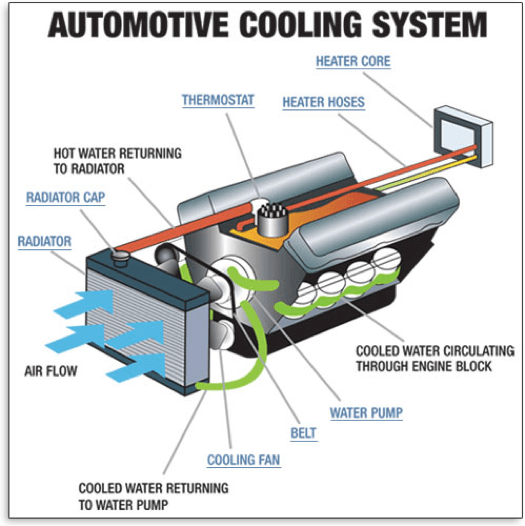Roadside Survival Guide

School's almost out, the sun is shining, and the relaxing beach vacation you've been waiting for is just around the corner. In the midst of making your summer travel plans, don't forget to take a few minutes to plan for the unexpected. Long road trips, combined with summer heat, can put a lot of wear on your car. Make sure you're lying on the beach, not stranded on the side of the road, by outfitting your car with a roadside survival kit:
- . Don't skimp on materials—Cheap is not always better, especially when it comes to tools you have in your trunk. Make sure to get a set of heavy-duty jumper cables. They should be at least four-gauge, 20 feet long, and made of copper. Same goes for your tire gauge. Get one that goes up to 100 pounds so that you can also check your high-pressure spare tire. Lastly, pack a collapsible gas container for those times that you thought there'd be a gas station just around the corner…
- Think Versatile— Multi-purpose tools are invaluable when you're stuck on the side of the road. Make sure your kit is equipped with a four-in-one screwdriver, a pair of vise-grip pliers, and the ever-useful roll of duct tape.
- Light at the end of the tunnel— Changing a tire isn't fun, changing it in the dark is even worse. A flashlight is always a great thing to keep in your trunk, but if you really want to go the extra mile, pack a generator light. There's nothing worse than reaching for your flashlight only to realize that the batteries are dead.
- Safety First— Of course, no roadside survival kit would be complete without basic first-aid supplies (bandages, sterile gauze pads/dressings, antibiotic ointment, acetaminophen tablets, and protective gloves).
- Once you've got this kit in your trunk, you'll be summer road trip ready! If you have any questions or would like a pre-trip inspection, give us a call or visit our website. We're always here to help!
Keep Your Cool This Summer - Cooling System 101

If you've ever tried to open the hood of your car after it's been driven for some time, you know that it gets hot under there. On average, the engine of a four-cylinder vehicle travelling at a speed of 50 mph will produce 4,000 explosions per minute! If not controlled properly, the massive amount of heat generated by these explosions would destroy the engine in a matter of minutes. That's where the vehicle's cooling system comes in.
As you drive, the cooling system is circulating a liquid coolant through the engine and then out to the radiator, where it is cooled by air coming through the front grill. The main components of a cooling system include: passages within the engine block and heads, a water pump to circulate coolant, a thermostat to monitor coolant temperature, and a radiator to cool the liquid after it has travelled through the engine. As the anti-freeze travels through these passages, it picks up heat from the engine and carries it away to the radiator where it is cooled. Once cooled, the liquid is sent back through the engine.
Before you go on any long road trips this summer, check to make sure that your vehicle has enough coolant and that it is not corrosive. Over time, the coolant can become corrosive and, if not flushed, can cause leaks and overheating. Coolant should be changed every 24,000 miles and any cracked, leaking, or brittle hoses should be replaced at the same time. If you have questions or need help, give us a call or visit our website.